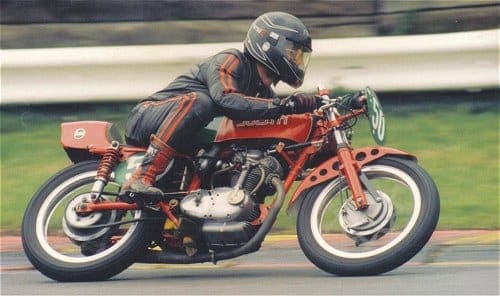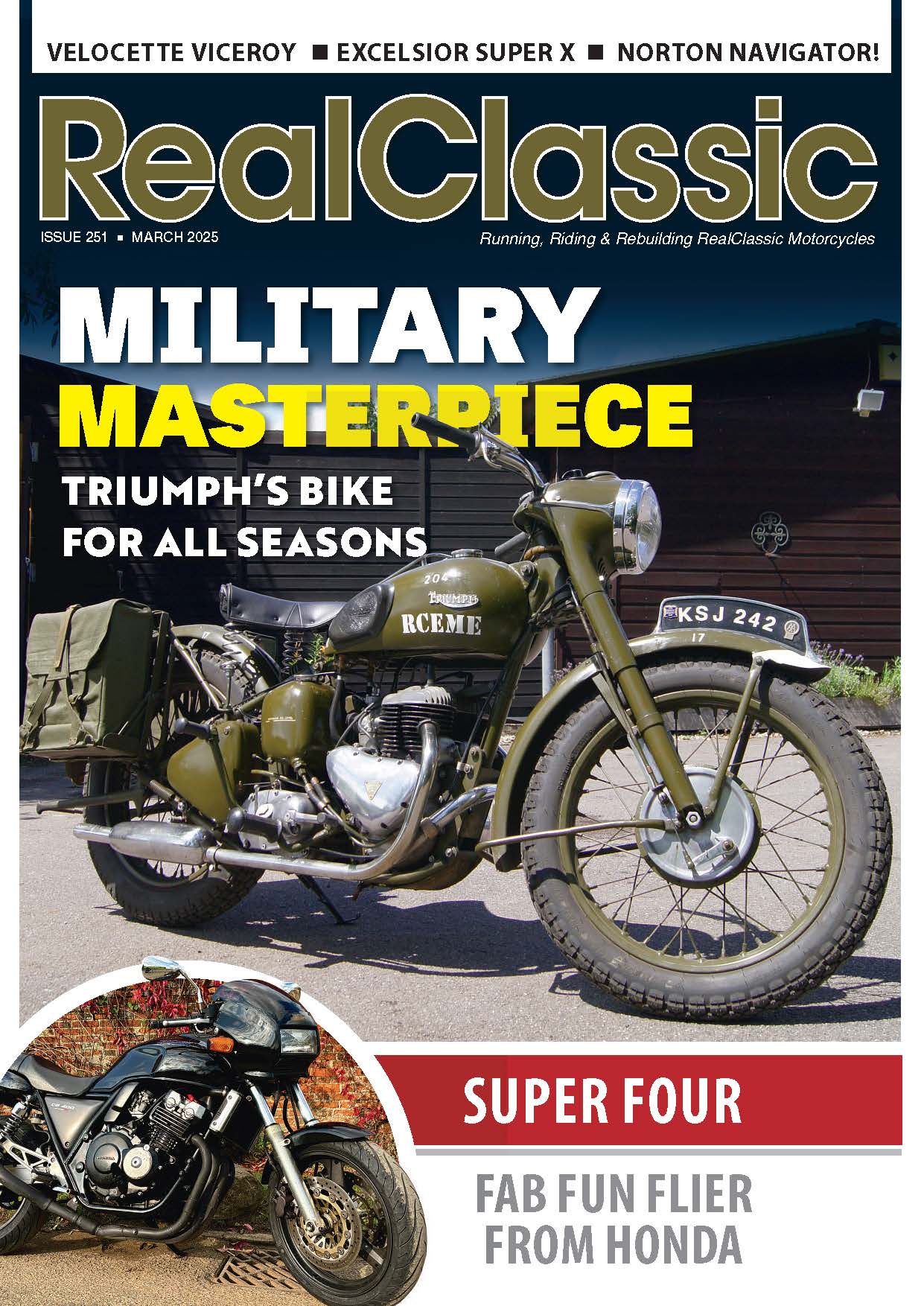
The ’24 Horrors’ has something of an appalling reputation, explains Kel Boyce. He bought one, and took it racing…
You may know that the single cylinder Ducati was the backbone of 250cc racing, at least during the early years of racing under the Classic Racing Motorcycle Club. The fact that the ‘Duke’ never really stood up too well against the two-strokes in the 1960s and, nowadays, has to be protected against deja vu by running in a separate four-stroke class is neither here nor there.
Anyway, many of us like to don the old rose-tinted specs and dream about an era which never really existed, when those beautiful Mach 1s (and later variants) ruled the roost and blew the strokers away with their booming exhaust notes. Certainly, those revered bevel-drive singles were charismatic to people like myself, who began riding in the mid-1960s but could never afford better than an old beat up Ajay or Fanny B.
To those riders of the Sixties then, the Mach 1 remained a dream machine until the foundation of the CRMC enabled some of them to live the dream and take to the track on narrow-case Dukes. To true believers, this was a time to enjoy the youth they never had and soak up Ducatimania.
But what about that Spanish 250, masquerading as a Ducati – the ’24 Horas’ built by Mototrans?
Very few of these bikes have ever made it to the tracks or roads of the UK and many riders would not even mention the name ’24 Horas’ in the same breath as Ducati. The reason? The story of one bike imported by a dealer, which suffered an element of valve-gear failure that the dealer then refused to rectify under warranty. Obviously aggrieved, the owner took to the street outside the bike shop proclaiming the bike to be rubbish and dealer a fraudster. This is the tale of one bike but it somehow got into biking folk-lore and the ’24 Horas’ was dubbed a dog and its name forever damned. In fact it was re-named the ’24 Horrors’.

I had heard this story and, when looking to start road-racing in 1986 I would not have dreamed of buying a 24 Horas. However, that’s exactly what I did – inadvertently! You know the routine – seller advertises bike for sale, buyer meets seller at motorway service station, buyer goes off with duff bike, seller goes off with pocketful of dosh. This is what happened when I bought (for £450) what seemed to be a 250 Ducati but was actually a Spaniard dressed as an Italian – a fake Duke, no less!
Now I’m not saying that I immediately discovered the bike was a Mototrans and it was some time later when I realised that all of the funny bits on the bike added up to 24 (Horas) but, before proceeding any further, I should explain what the origins of the ‘Horrors’ are. The bike was a road-going replica of the Ducatis (built under license by Mototrans) that won several 24-hour races at Montjuic Park, Barcelona during the 1950s and 60s. This was really a special designed to survive 24 hours of eyeball-shaking thrashing around a demanding circuit and those wins tell of the inherent quality and ruggedness of the bike.
|
So, in what way does the replica differ from a standard Mototrans or Ducati? The road engines by Mototrans had different bores, strokes, and other details to the Dukes but the main difference between a 24 Horas and a standard Ducati or Mototrans is in the chassis. The swinging arm and frame (which I believe is of heavier gauge tubing) are heavily braced and the front forks are by a Spanish manufacturer (Telesco, I think). The fork stanchions appear to be of thinner gauge steel than Marzocchis but I found (to my horror!) that the yokes were fashioned from something akin to steel girders and that the rear brake torque arm was of similar material and weighed about a kilo! I armed myself with a good, sharp drill and had the torque arm and swinging arm gussets looking like Swiss cheese in no time flat… |
Random Ducati 250 Stuff on eBay.co.uk |

On the version I had bought the rear brake was huge and reminiscent of that fitted to the Italian 750, whilst the front was a 4ls of a type I’d never seen before. A Dell’Orto SS1carb had been fitted and I replaced this with a 32mm Amal, a make that was a normal fitment for the Mototrans bikes (Amals too were made under license in Spain).
Time, then, to take to the track…
Any other bikes that lore tells us to avoid?





